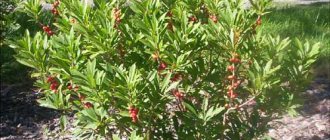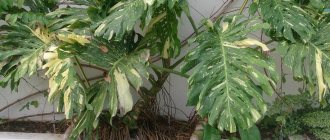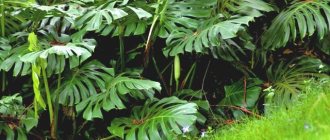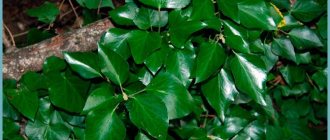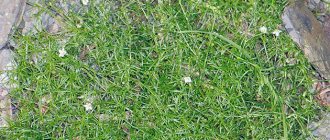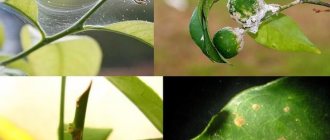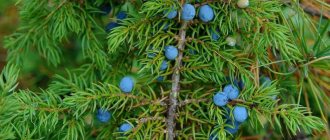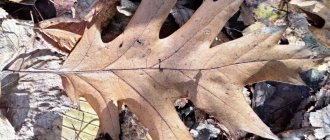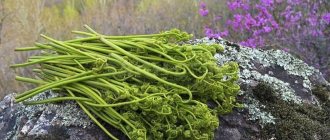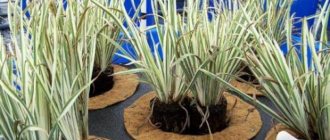Several hundred years ago, Europe was filled with rumors that the tropical forests of South America were home to plants that were killing people. As soon as a person falls asleep, tentacles crawl out of the jungle, pierce and entangle the bodies, leaving only bones by morning.
Travelers nicknamed this plant monstrum, which means “monster” in Latin. However, subsequently the name was transformed into “monstrosus” (monstrous), which has a more good-natured translation - “bizarre”, “amazing”.
In the 18th century, botanists began to study the “terrible plant”, and a couple of decades later, from a killer plant, Monstera became an exquisite decoration of European homes. Monstera fashion is still relevant today. These vines, with huge carved leaves, are recommended by designers for decorating any type of room.
Biological features
The genus Monstera belongs to the Araceae family. Deposit - tropical forests of Central and South America.
Monstera Deliciosa is a climbing species, the height of which can reach 4 m. The plant has a main fleshy stem from which aerial roots grow. They are needed not only for nutrition and reproduction, but also as additional support.
Monstera flowering
For your information! Monstera dainty has bright green leaves, their surface is smooth and shiny. Young leaves are heart-shaped and whole; over time, holes appear, followed by elongated or round cuts.
During the flowering period, creamy ears appear on the monstera, covered with light green fluff. After flowering, sweet and sour berries are formed. Flowering time occurs in the spring-summer season, but this occurs extremely rarely in residential areas.
Dormancy and flowering period
Monstera is an evergreen plant without a pronounced dormant period. When daylight hours decrease and the ambient temperature drops below +20 °C, it slows down its growth. In addition, in winter it does not require fertilizers; watering becomes more scarce. This period gives the vine a break and the opportunity to begin to develop quickly again in the spring.
In nature, the plant blooms with large, up to 30 cm tall, white or light cream flowers, reminiscent of corn cobs. Unfortunately, this practically does not happen at home. Only sometimes can flowering and fruiting be achieved in large greenhouses or winter gardens.
About 8–10 months after flowering, Monstera fruits are fully ripened. Its berries are edible, as reflected in the name - monstera deliciosa or tasty.
Interesting facts about Monstera deliciosa
There are many myths about the plant. The most common rumors are that monstera is poisonous, brings trouble to the house and takes away energy from the residents. There is no scientific confirmation of this, so you can safely start a vine in your apartment.
Monstera flower - what the plant and leaf look like
What interesting things are known about Monstera Deliciosa:
- from Latin the name “monstrum” is translated as “monster”. It occurred thanks to creeping stems, the diameter of which reaches 20 cm and has long aerial roots;
- according to another version from Latin, the name is translated as “bizarre”, “amazing”, which fully corresponds to its appearance;
- Princess of Brazil Isabella of Braganza, daughter of Emperor Pedro II, started the tradition of eating monstera fruits for dessert; it was her favorite delicacy;
- before the rain, drops of sticky juice appear on the leaves, so the flower is a kind of barometer;
- Esotericists believe that aerial roots take away energy from those around them, but they are necessary solely to obtain additional moisture from the air, since the plant’s homeland is the tropics;
- residents of Southeast Asia are confident that monstera is a source of health and well-being;
- in Thailand, it is customary to place a pot of vines near sick people;
- In Laos, Monstera deliciosa is used as a talisman and placed on the doorstep of the house.
Note! There are also several versions about the origin of the name of the flower, which concern not only its appearance. One of the legends says that after the discovery of South America, killer plants were discovered in the jungle that attacked people and animals. They said that after the battle with the vines, all that remained of the body were skeletons hanging from the trunk. In fact, travelers confused the murders with aerial roots sprouted into the already deceased body of a person who once died in the jungle.
Liana in the wild
Reproduction
Cuttings
Monstera deliciosa can be propagated by cuttings. The best time for this is early spring.
- Cuttings must be at least 5 cm long
- They must have two leaves and at least one aerial root
- Without aerial roots, propagation usually fails
- Pruning should be done approximately 1 cm below the aerial root.
- Then let the cut areas air dry for an hour.
- Fill the pot with substrate for growing monstera, for example, a mixture of soil and sand in equal parts
- Insert the cutting along with the aerial root into the soil
- Moisten the soil
- Cover the pot and cuttings with transparent film or plastic bag
It is important to note that the cutting must have at least two leaves so that it can perform photosynthesis as an important prerequisite for rooting. Because these leaves can sometimes be quite large, they evaporate a lot of moisture. Therefore, more frequent watering may be required than usual when propagating other houseplants.
The film should not touch the cutting. This can be achieved using small wooden sticks. The pot is then placed in a warm and partially shaded area, the substrate remaining evenly moist until rooting occurs. To avoid mold formation, the film should be removed every day for a short time. As soon as the first new sheet appears, the film is removed. After about four to six weeks, enough roots will have formed so that the young plant can be transplanted and properly cultivated.
Tip: cuttings can also be rooted in a glass of water. Again, the cut area must first dry. The water must be changed regularly.
A section of the trunk
Leafless, non-woody parts of the stem axis, with at least one dormant bud, are suitable for this. This propagation is especially useful if the monstera has become too large or needs to be pruned anyway. This type of propagation can be carried out all year round. The shoot axis is cut so that the growth points (leaf nodes with dormant buds) are in the middle of the corresponding cuttings.
Then the cutting with the buds pointing upward is placed in a pot of soil, the substrate is moistened and covered with a transparent plastic bag. Both roots and new leaves develop from the buds. However, this happens in any case longer than when propagating from head cuttings. Once rooting occurs, the young plant can be replanted and grown as usual.
Seeds
If you don't want to trim your Monstera but want to grow more plants, you can propagate it from seeds. Since the seeds are tiny, they do not need to be soaked.
- Fill the pot with soil;
- Lightly moisten the substrate and spread the seeds on it;
- Monstera seeds must be covered with soil. They are planted 1 cm deep into the soil;
- Cover the pot with a clear plastic bag;
- Place in a warm place at a temperature of 20 to 23 ° C;
- The germination period ranges from 2 to 6 weeks;
- Keep the soil slightly moist during this time;
- When the seedlings grow to a height of about 10 cm, they are transplanted into separate pots with monstera soil;
- The film is no longer needed.
The biggest problem when propagating by sowing is the formation of mold on the surface of the substrate when covered with film. Therefore, it is necessary to remove the film from the pot for a short time every day.
Monstera as a food product
Monstera - propagation at home
The shape of the berries resembles an ear of corn, they are covered with dense scales on top, their length ranges from 20 to 40 cm and up to 9 cm in diameter. The pulp of the fruit is juicy, sweet in taste, reminiscent of a mixture of pineapple and banana, a little jackfruit.
Note! Fully ripened fruits do not burn the mucous membrane, unlike pineapple. The juices of an unripe fruit cause irritation, you can get a burn to the oral mucosa, and provoke the development of stomach and duodenal ulcers.
To eat Monstera fruits, the plant is grown in Australia and India. If you manage to buy unripe fruits, they are wrapped in foil and placed on a windowsill in direct sunlight.
Monstera fruit
Composition and calorie content of monstera fruits
Nutritional value of fruits per 100 g:
- 73.7 kcal;
- 77.9 g water;
- 16.2 g carbohydrates;
- 1.8 g protein;
- 0.2 g fat;
- 0.57 g dietary fiber;
- 0.85 g of ash.
The composition of the berries has not been studied enough; it is known that they are rich in the following elements:
- sugar;
- starch;
- ascorbic acid;
- oxalic acid;
- thiamine;
- calcium;
- phosphorus;
- potassium;
- sodium.
As a result, eating berries has a beneficial effect on the immune system, preventing viral and bacterial diseases, increasing body tone, and stimulating physical and emotional activity. Eating fruits improves intestinal motility, eliminates muscle spasms, and fights dehydration.
Important! Many people experience individual intolerance to the product.
Growing difficulties
When growing monstera, you may encounter the following problems:
- drying, yellowing and darkening leaves - excessively dry and hot air in the room;
- drilling and cracks on the leaves - the room is too cold and damp;
- small, pale and without slits leaves - lack of lighting;
- stem rotting - low temperature and excessive watering;
- dark spots on the inner surface of the leaves - damage by red spider mites;
- flaccid and “crying” leaves - excess moisture in the soil and atmosphere;
- yellowing and small leaves, but without wilting - a deficiency of nutrients in the soil;
- pale leaves with yellow spots - prolonged exposure to direct sunlight.
The main methods of combating all these phenomena is to eliminate errors in the care and maintenance of vines.
Many experienced gardeners believe that growing monstera is not a difficult task even for novice plant lovers. As a result of the work, you will get an exotic tropical corner, in the shade of which it will be pleasant to relax and admire the unusual leaves of a luxurious green beauty.
Monstera: poisonous or not
Since the plant came to Europe from the tropics, the logical question is whether it is possible to put a flower at home, whether Monstera is poisonous or not, especially if there are small children or pets in the room.
Is it possible to keep Monstera deliciosa at home?
Monstera variegated or variegated in the interior
Keeping a plant in the house is not only possible, but also necessary. Monstera leaves do not contain any hazardous substances. You should be careful with microscopic needle-like formations that are in the pulp of the leaves, which can cause a burning sensation if the leaf gets into the mouth. This can happen to cats, dogs or parrots who sin to nibble indoor flowers.
Note! It is believed that tropical plants absorb large amounts of oxygen, especially at night, which can cause suffocation in a sleeping person. No such case has been recorded.
As for the toxicity of the plant, there is some truth in this statement. There is poison in the juice of plant flowers, but in order to burn the mucous membranes of the mouth and stomach, you need to bite and chew the flower petal.
In defense of the monstera, it is worth noting that its leaves are good at trapping dust that enters the room. At the same time, the plant releases biologically active substances that purify the air and fight certain viruses and bacteria.
Types of monstera with photos and names
Monstera adansonii
This species is found naturally in the tropical zone from Costa Rica to Brazil. This vine can reach a height of about 8 meters. Thin ovoid leaf plates are 20–40 centimeters wide and 25–55 centimeters long. There are many holes on the entire surface of the plate. When grown at home, flowering of this species is extremely rare. During flowering, a short peduncle appears, on which a yellowish ear is formed, its length is 8–12 centimeters and its width is 1.5–2 centimeters.
Monstera deliciosa borsigiana
Under natural conditions, the species is often found in Mexico. Its stems are thinner than those of Monstera deliciosa, and the leaf blades are smaller (up to 0.3 m in diameter). The species grows well both at home and in other premises.
Monstera deliciosa
This climbing vine comes from the humid and montane forests of the tropics of Central America. It can grow at an altitude of up to 1 kilometer above sea level. Young leaf blades have a heart-shaped shape and a solid edge. As the foliage grows, it increases in size (up to 0.6 m in diameter), becomes leathery to the touch, heavily dissected and with holes. Covered with a white sheath, the cob reaches about 25 centimeters in length and up to 20 centimeters in width. The pulp of the emerging fruits can be eaten; it has a pineapple taste and aroma. The height of such a plant in a greenhouse can reach 12 meters, and at home - about 3 meters. If an adult flower is provided with proper care, flowers will appear annually. There is a variety of variegata: the foliage is variegated white, the plant itself is characterized by slower growth and higher care requirements.
Monstera obliqua
Either Monstera expilata or Monstera falcifolia. This climbing vine comes from the tropics of Brazil and Guiana, and is found in humid forests. The whole elliptical or lanceolate leaf plates are unequal at the base, their width is about 6 centimeters, and their length is up to 20 centimeters. The length of the petiole is no more than 13 centimeters. During flowering, an eight-centimeter peduncle grows, on which a few-flowered spadix about 40 mm long is formed.
Monstera pertusa
In nature, this climbing vine is found in the tropical rainforests of America. The shape of the foliage is ovoid, it looks like an elongated egg, its length is about 0.9 meters, and its width is up to 0.25 m. The holes on the plate are unevenly spaced, and the plate itself is unequal (expands more towards the bottom of the leaf). The length of the cob is 10 cm, it is covered with a white sheath, reaching a length of 20 cm.
Monstera - My favorite. Home care
Features of caring for Monstera deliciosa
Monstera deliciosa is an unpretentious plant that requires minimal care.
Requirements for cultivation and care:
- any lighting other than direct sunlight;
- moderate air temperature (not lower than 12°C), the hotter it is, the faster growth occurs;
- composition of soil for growing: 1 part each of sand, peat, turf soil, 2 parts humus, can grow hydroponically;
- frequent spraying, wiping with a sponge, polishing the leaves;
Monstera in the interior
- abundant watering, constantly keeping the soil moist;
- replanting as the plant grows (about 2 times a year);
- replacing the top layer of substrate in adult flowers once a year;
- application of complex fertilizers from March to August once every two weeks.
Monstera is ideal for growing in a heated winter garden. The plant is not afraid of pests, except scale insects.
Thus, all the myths about the flower are nothing more than fiction, so there is no need to be afraid when planting a monstera. On the contrary, it will only bring benefits.
Diseases and pests
With good care, Monstera deliciosa is a hardy and disease-resistant houseplant. However, it is susceptible to attack by scale insects and spider mites, especially during the heating season. Therefore, it is recommended to regularly check the monstera for sticky spots and white cobwebs.
Spider mites
Infection with spider mites most often occurs in winter due to warm and dry heated air. This pest shows itself as a white web located mainly on the undersides and axils of leaves. Subsequently, the leaves become silver, later turn brown and die. If the plant is not yet very large, you can first rinse the monstera thoroughly in the shower and then place it in a clear plastic bag or garbage bag for three days, tightly closing it on all sides. High humidity kills the pest. In the case of very large plants, pest control with the help of special preparations is recommended.
Shchitovka
You can recognize these pests by their small, brownish, curved scutes. Affected plants should be immediately isolated from others. To combat scale insects, special sprays are suitable, as well as products in the form of sticks that are inserted into the substrate. There they gradually release active components. The poison is absorbed by the roots and distributed throughout the plant through the sap, so that it reaches every pest.
To prevent further spread of pests, it is important to isolate infected Monstera from other houseplants. Even if she doesn't like the change of location, this measure in this case is the lesser evil.
